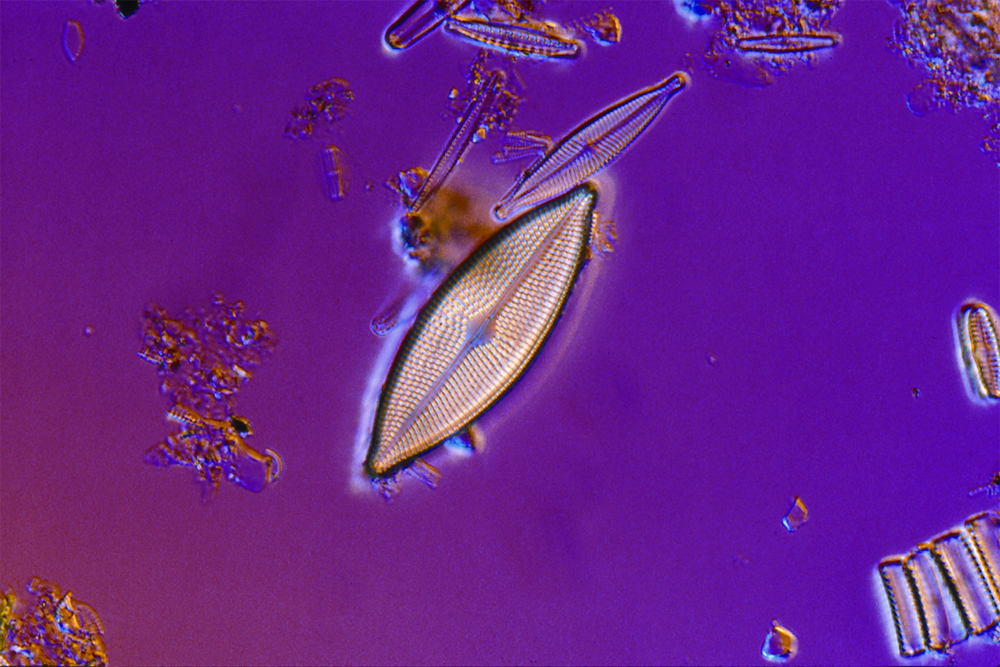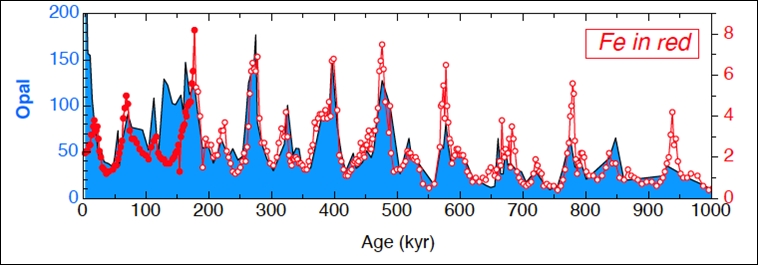Plankton Pumping Iron May Impact Climate

This Research in Action article was provided to LiveScience in partnership with the National Science Foundation.
Like humans, phytoplankton (tiny plants that drift on ocean currents) need iron to survive. Normally, though, iron is in short supply in the ocean. But a recent study funded by the National Science Foundation suggests that over the last 1 million years, periodic increases in iron — which mainly reaches the open ocean in the form of windblown dust — have caused spikes in phytoplankton numbers.
Why study changes in phytoplankton abundance? Because increases in phytoplankton populations may impact global climate. Here's how: Phytoplankton consume carbon near the surface of the ocean through photosynthesis. Because the upper ocean and the atmosphere are closely connected through chemical exchanges, more carbon consumed in the ocean may mean less carbon dioxide in the atmosphere. Therefore, increases in phytoplankton populations may slow global warming or even contribute to global cooling.
Although a direct effect on climate by phytoplankton has yet to be confirmed, the new study supports the Iron Hypothesis, an idea developed over 20 years ago by marine scientist John Martin. Martin argued that when the Earth goes through dry, dusty climate periods, more iron reaches the ocean in the form of windblown dust, which acts like a fertilizer for phytoplankton. As the phytoplankton become more numerous, they draw down carbon from the atmosphere, thereby helping to cool the planet.
Other research has supported a link between iron and phytoplankton in the present-day ocean, but this latest study provides a unique look back in time.
To investigate the long-term influence of iron on phytoplankton, Richard Murray of Boston University and a multi-institution team of scientists studied prehistoric sediments buried in the seafloor. They found that as iron levels periodically increased and decreased over time, so too did levels of opal — a material many people associate with jewelry, but which marine scientists use as an indicator of phytoplankton abundance.
Opal indicates phytoplankton abundance because it is secreted by diatoms as material to form diatom shells. Diatoms are among the most common and important kinds of phytoplankton. As the abundance of diatoms changes over time, these changes are reflected in the amounts of opal (dead diatom shell) that settles on the seafloor and eventually is buried by marine sediment. By tracking opal and iron in the sedimentary record, Murray and his team were able to show that the relationship between phytoplankton and iron is long-standing, even ancient.
Sign up for the Live Science daily newsletter now
Get the world’s most fascinating discoveries delivered straight to your inbox.

In the diagram accompanying this article, iron (Fe, in red) and opal from phytoplankton shells (in blue) are closely linked in seafloor sediments over the past 1 million years. Numbers on the horizontal axis represent the number of years before present. Numbers on the vertical axes represent the rate at which opal and iron have accumulated and been buried in the seafloor, in units of milligrams per square centimeter per thousand years (mg/cm2/kyr).
Editor's Note: Any opinions, findings, and conclusions or recommendations expressed in this material are those of the author and do not necessarily reflect the views of the National Science Foundation. See the Research in Action archive.










